Undoubtedly, the wealth myth of the stock market is repeatedly staged. Since 1990, the market has created countless wealth legends, and many people have successfully struck gold in the market through their wisdom, even becoming millionaires or billionaires overnight. However, this is ultimately the minority. Most retail investors are in continuous loss, going from having to having nothing. 70% of retail investors contribute to the 10% of successful individuals; it is the losses of the majority that accumulate the wealth of the few.
Most severely losing retail investors have some fatal mistakes and weaknesses; they are always in a full position, unrealistic in their fantasies, often harboring a wishful thinking mentality, and do not understand how to avoid risks. Once they are trapped, they refuse to sell at a loss, leading to short-term positions becoming medium-term, medium-term becoming long-term, and long-term becoming shareholders. When the real market arrives, they can only watch others make big profits while they stand guard on a high peak.
Most retail investors cannot analyze the market correctly and calmly; most do not have their own opinions and merely follow the crowd. They rarely conduct in-depth research and analysis on the stocks they buy. After buying, they panic when trapped and do not know how to respond. Almost without exception, successful stock market participants do not have these flaws; all their buying and selling are planned in detail and governed by strict discipline. Even if they make mistakes, they do not panic or become flustered.
I am an old stock trader, considered one of the first batch of stock investors in China. Every day, countless people flock to the stock market, and many friends fall into losses and being trapped. Every time I see investors suffering losses in the stock market, it pains my heart. I am not saying this lightly; I have experienced that kind of pain, and it was even more tragic and heart-wrenching.
So please patiently listen to me; it may help you, even if just a little, it won't be in vain.
As I have come this far, I think about it every day and learn every day. My family advises me not to tire myself too much, saying the money earned from the market is enough, and I should take care of my health and drink tea. However, I still persist in reviewing the market until midnight every day, constantly learning and researching the subtle clues of various funds! It is indeed tiring, and although I am usually very busy, seeing countless investor friends still suffering in deep water makes me want to do my utmost to help everyone establish the correct stock trading awareness!

The stock market is turbulent; growth comes from communication. I often think that giving a fish is not as good as teaching to fish. If we can gather more retail investor friends together to communicate and come up with strategies, things should improve. One reason is the fear of fueling one's own greed, and another is that everyone’s fortune is different; if one cannot see the cause and effect, one has no right to change another's destiny. I am a believer in karma.
Next, I would like to share a summary of many years of experience, hoping to help everyone walk more steadily in the stock market, and also as a piece of advice:
Avoid Greed
Trading stocks can be successful, but it is very difficult. And the fundamental reason for failure in stock trading is that everyone is a 'money fanatic' who cannot control their hands and hearts. Do not deny it; I believe that as long as one is a normal person, one is a 'money fanatic'. This is almost the fundamental reason every retail investor becomes a loser. Interestingly, many retail investors can initially make money, but their inflated confidence brings hidden dangers in subsequent operations. There is a saying that 'profit can cloud one's judgment'; benefits can completely impair a person's intelligence. Another saying goes, 'They are all elites, but once they enter the stock market, they all lose their heads.' Therefore, to succeed in stock trading, the first step is to control one's greed.
If in doubt, manage risk.
Some people ask, 'Now that it is so low, is there still doubt? Should I leave the market?' I must say that as long as you have doubts and cannot see the future clearly, you must leave the market. If you can’t see clearly but still hold stocks, that is purely gambling. And the result of gambling is, of course, a 90% loss.
The stock market has similarities to a casino, but there is a significant difference. In a casino in Macau, each gambler has only a 48% chance of winning, and most people lose if they gamble for too long. In the stock market, the winning odds are constantly changing; sometimes they are as high as 70%, even higher, while at other times they can drop to as low as 30% or even lower. Only when it is clear and the winning odds are high should one enter the market; when it is unclear, one should exit. This is the approach of stock market winners, allowing them to control their losses and stay afloat.
Learn to cut losses and take profits.
There is a saying in the stock market: 'Those who can buy are apprentices, those who can sell are masters, and those who can go to cash are grandmasters.' Investors can select stocks, and many investors have chosen good stocks and made money, but very few can laugh until the end. Especially during the 2015 bull market, many initially earned quite well, but the end results were heart-wrenching. This undoubtedly illustrates the importance of taking profits and cutting losses in a timely manner. In the chaotic stock market, trading times and market conditions change in real-time, while you are still struggling with losses? I do not dare to call myself a stock god, but after nearly ten years of study and my understanding of the stock market, my operations are basically winning.
The Four Major Elements of K-lines
First, let’s look at the four major elements of K-lines. K-lines consist of opening price, closing price, lowest price, and highest price – four elements. To observe the bullish and bearish forces, one must pay attention to these four elements, not just the bullish or bearish nature of the K-line.
For example: After the market opens, if the price is driven up to the day's highest price by bullish forces, but then is pushed back down to the closing price by bearish forces, the comparison of bullish and bearish forces for that day is as follows.
Sellers: Highest Point - Closing Price. At any moment, the seller's power is the difference between the daily highest price and the closing price.
Buyers: Closing Price - Lowest Price. The buyer's power represents the difference between the closing price and the lowest price.
From this perspective, it should be easy to understand: Highest Point - Closing Price = Bearish Power. Buyers: Closing Price - Lowest Price = Bullish Power. Looking at the figure below should clarify further.
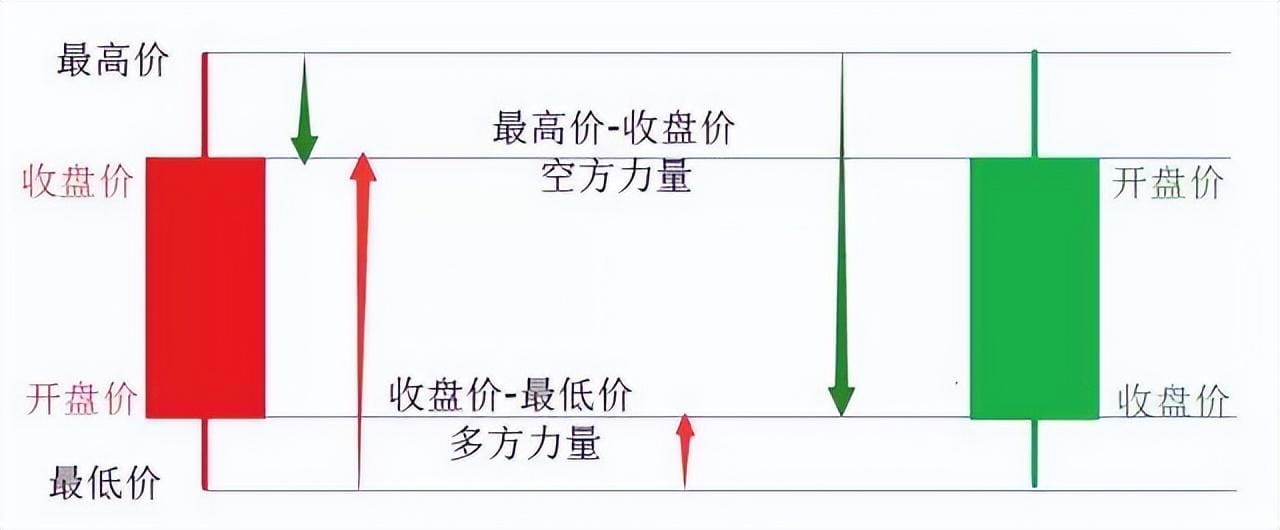
Let's look at an example below: The K-line shows a bullish candle, but the bullish forces may not necessarily be stronger than the bearish forces.

Similarly, the K-line shows a bearish line, but the bearish forces may not necessarily be stronger than the bullish forces.
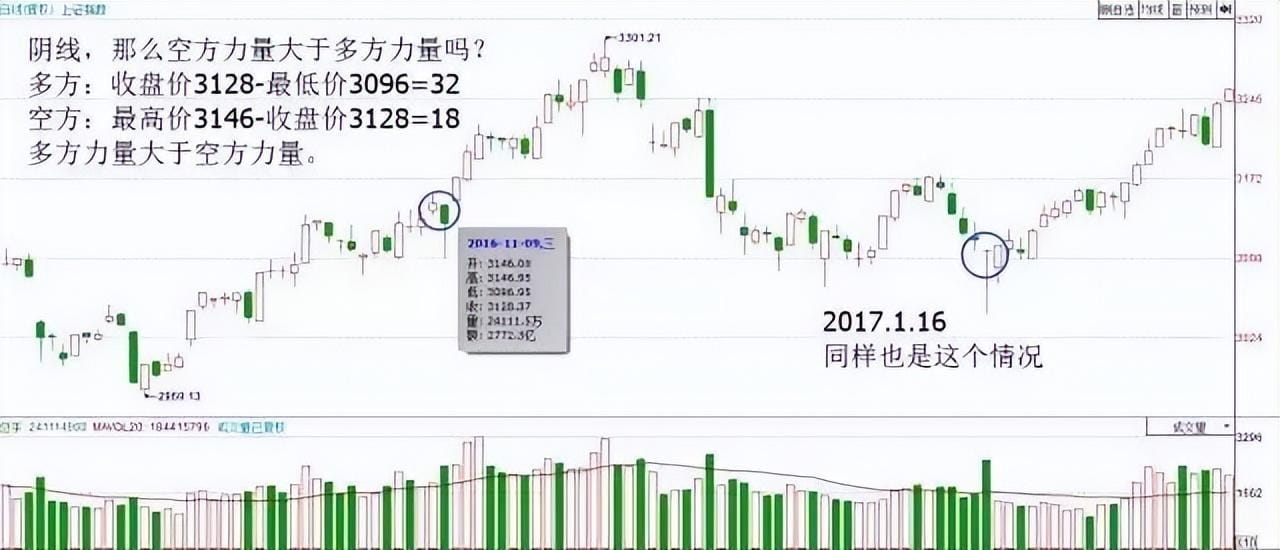
Operating Conditions
A single K-line can only represent the comparison of bullish and bearish forces on that day, but if you want to 'operate', you still need to combine it with the 'trend'.
1. When the trend is consistent with the bullish and bearish forces indicated by a single K-line, it indicates that future K-lines will resonate with the trend, and the probability of moving in the direction of the trend is greater.
Divided into two types
1) Uptrend, as shown: In an uptrend, the bullish forces dominate, indicating that the rise has not stopped.
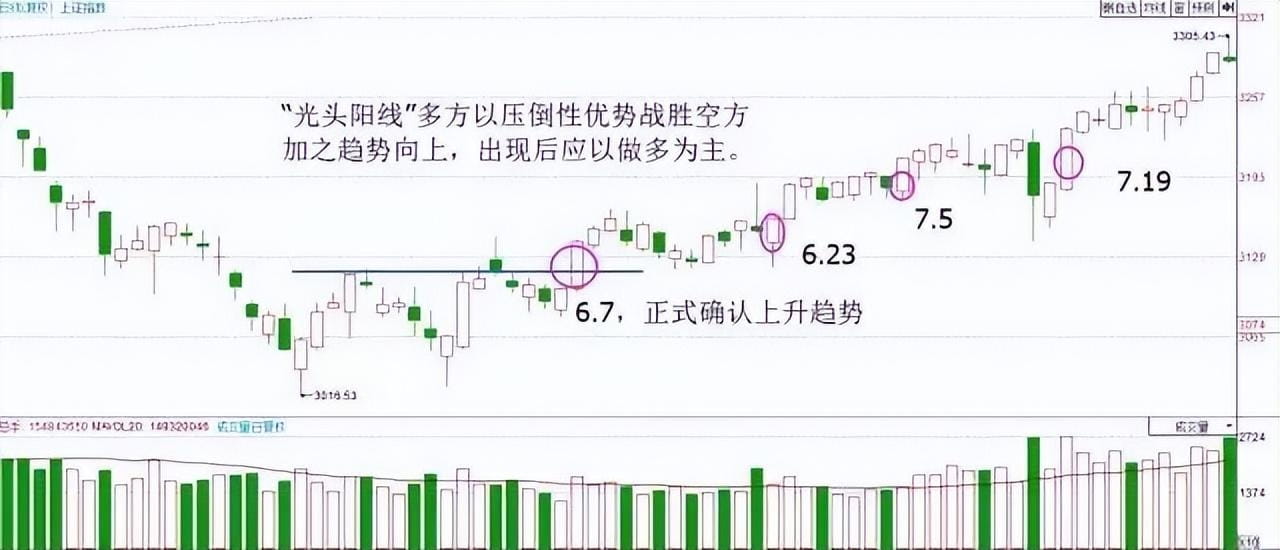
2) Downtrend, as shown: In a downtrend, the bearish forces dominate, indicating that the decline will continue.
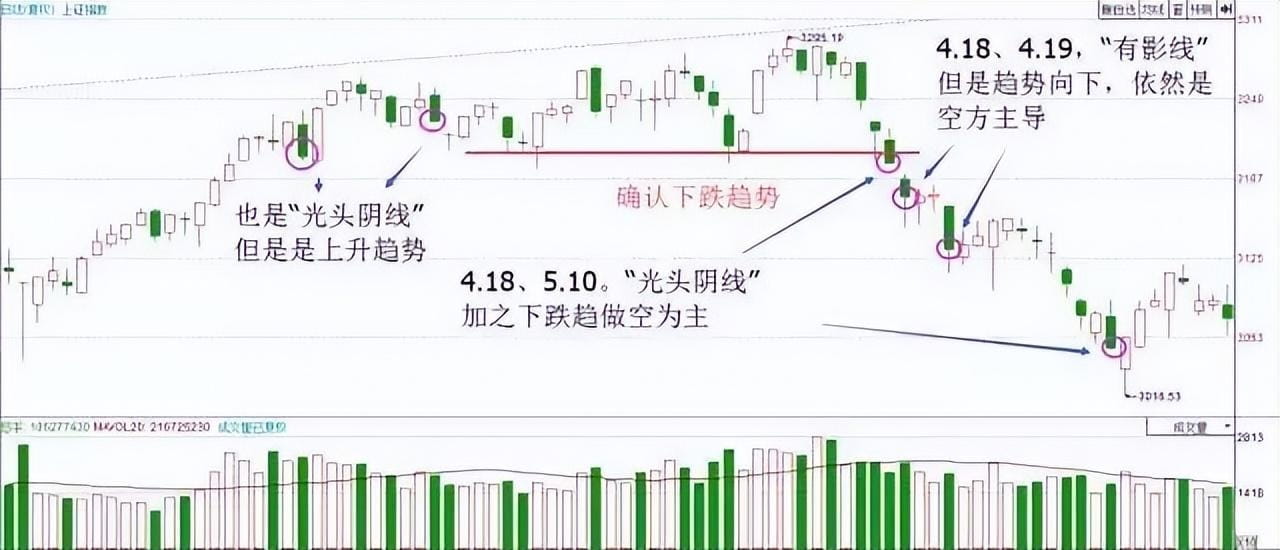
2. When the trend is inconsistent with the bullish and bearish forces indicated by a single K-line, you should judge based on whether the trend is deteriorating.
Also divided into two types
1) Uptrend, as shown:
In an uptrend, if bearish forces appear dominant, it might be a retracement or a shakeout; as long as the neckline is not broken, you can hold onto your position with confidence, and a bearish line could be your buying opportunity.
For example, in the uptrend shown, there were a total of 5 K-lines where the bearish forces were dominant, but the uptrend did not change; 4 of those were good buying opportunities.
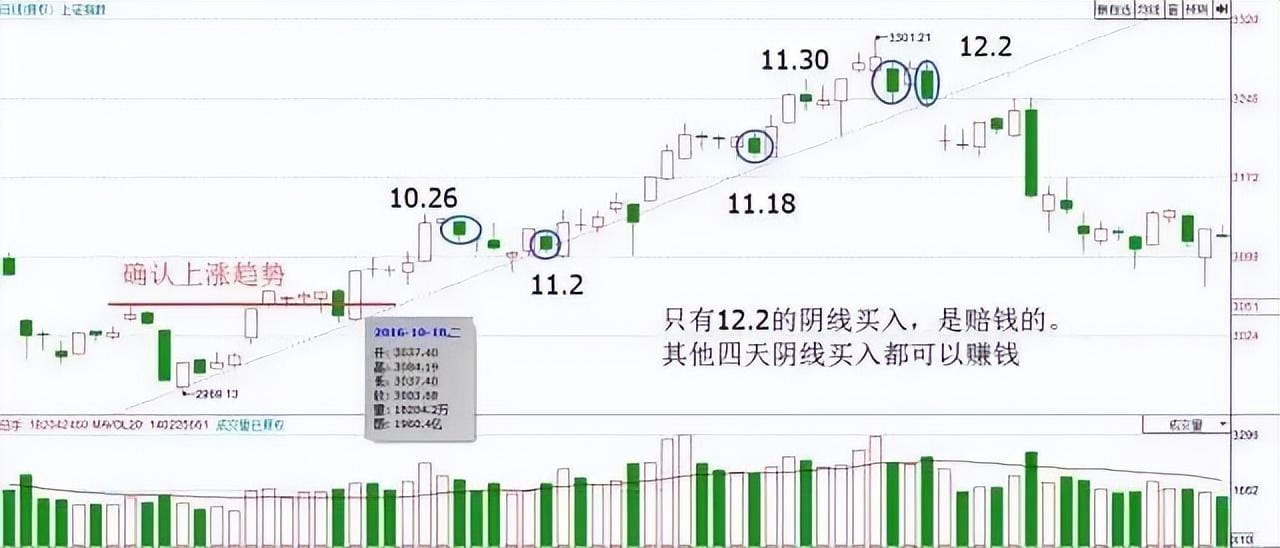
2) Downtrend, as shown: In a downtrend, if bullish forces dominate, it may be a retracement. As long as the downtrend neckline is not broken, consider it a retracement, and it is an opportunity for you to reduce your position.
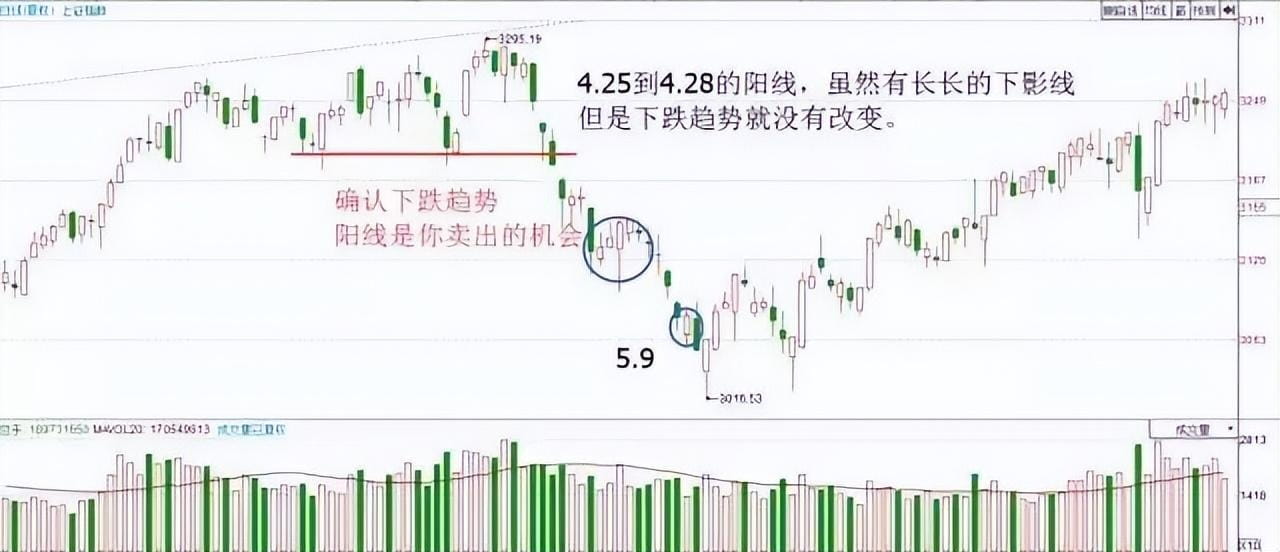
The principle of judging the comparison of bullish and bearish forces in a single K-line:
1. A bullish line reflects the dominance of buyers; the longer the bullish candle, the stronger the buying power.

2. A bearish line reflects the dominance of sellers; the longer the bearish candle, the stronger the selling power.

3. There are also false bullish and false bearish lines; everyone should pay attention to this point.
The above is a simple introduction to K-lines; now let's teach you how to read K-lines.
1. Look at Bullish and Bearish: Bullish and bearish represent the direction of the trend; a bullish line indicates a continuation of the rise, while a bearish line indicates a continuation of the decline.
2. Look at the size of the body: The size of the body represents the underlying momentum; the larger the body, the more apparent the trend of rising or falling, and vice versa.
3. Look at the length of the shadows: Regardless of whether the K-line is bullish or bearish, the upper shadow part constitutes the next stage's upper resistance, making the price more likely to adjust downwards. Similarly, the lower shadow suggests a higher probability of upward price movement.
Now that you understand the meaning represented by K-lines, let's combine it with the following K-line combinations; I believe you will no longer fear K-lines.
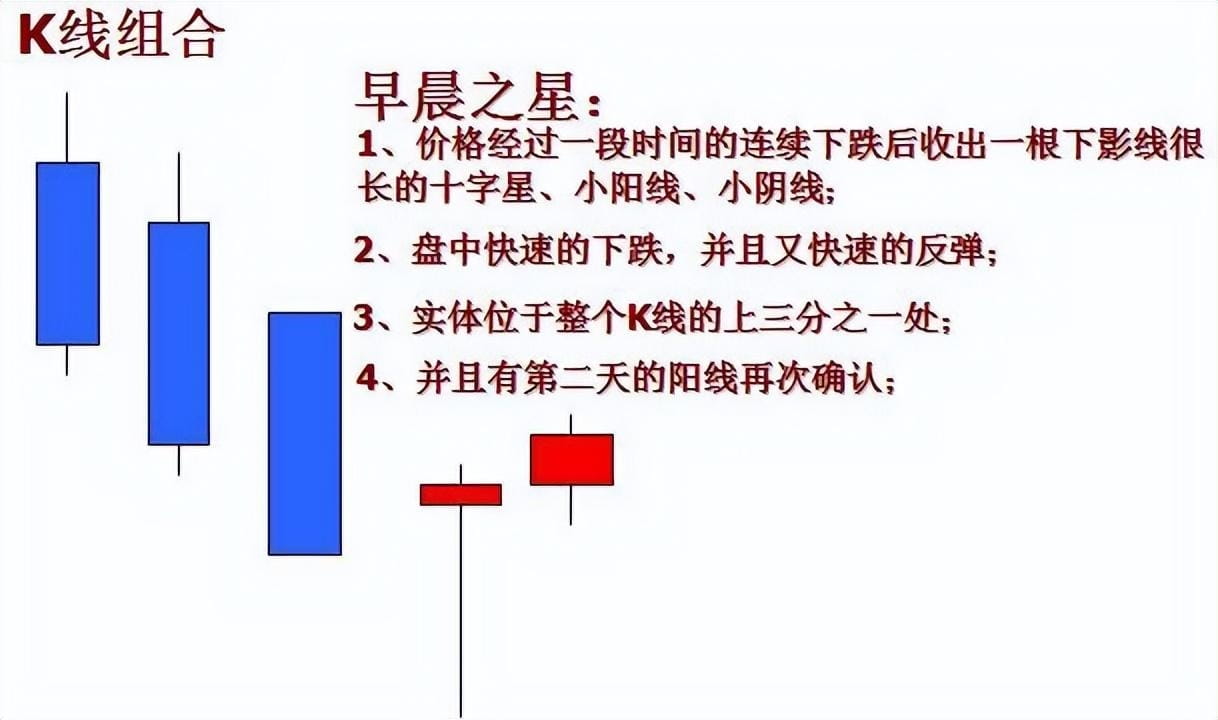
The pattern of the Morning Star
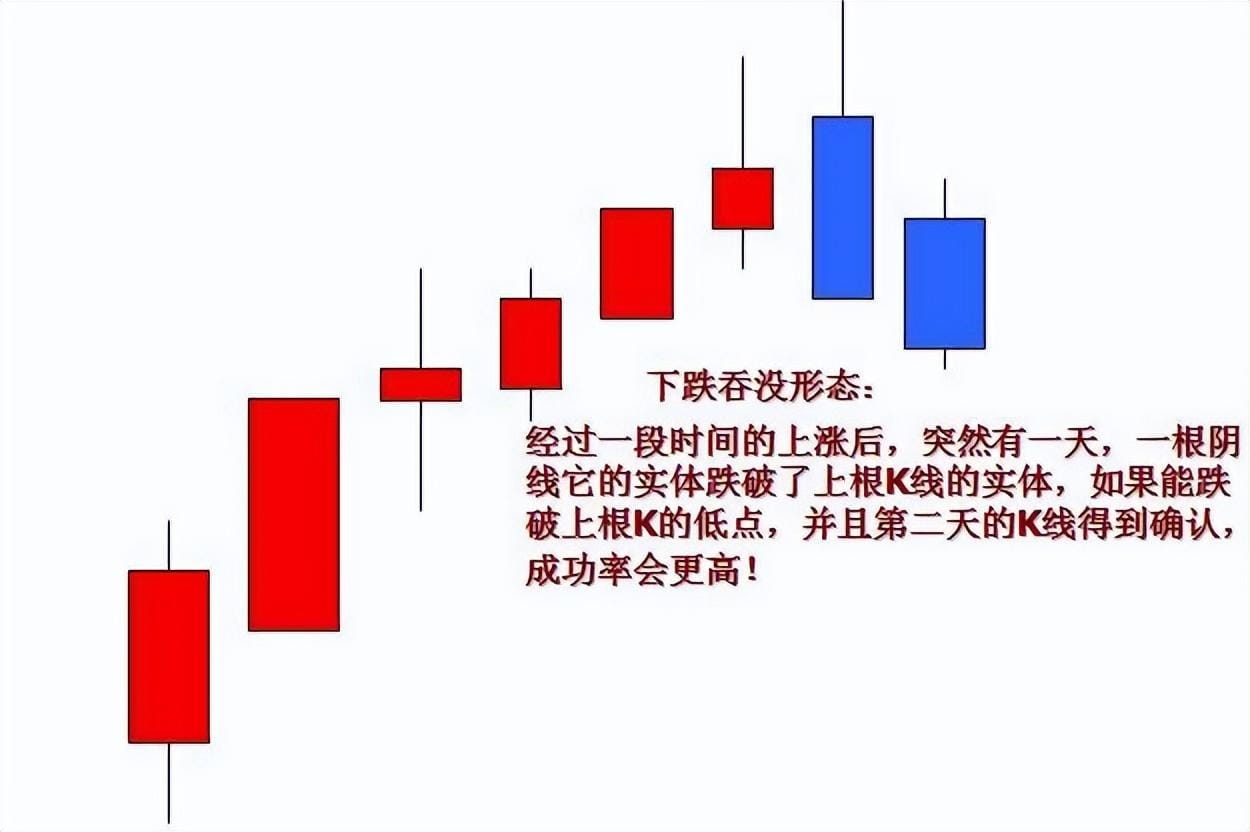
Bearish Engulfing Pattern
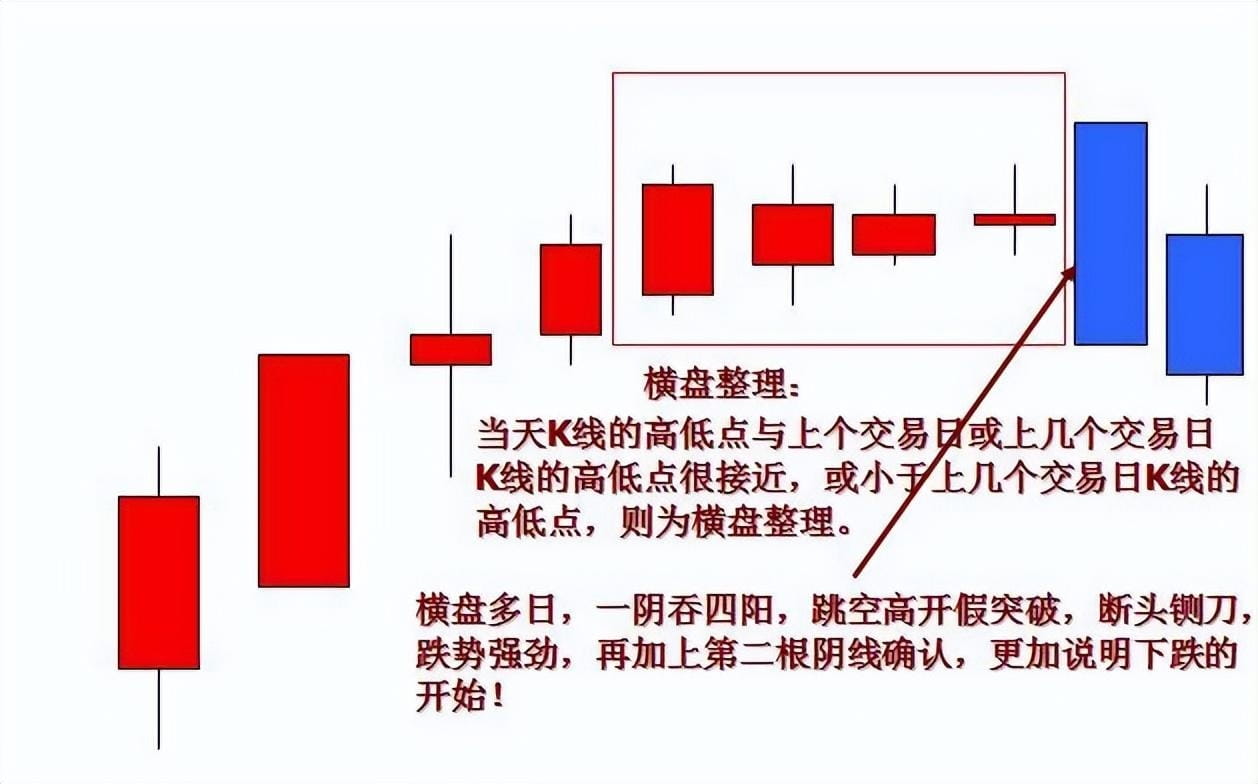
Consolidation
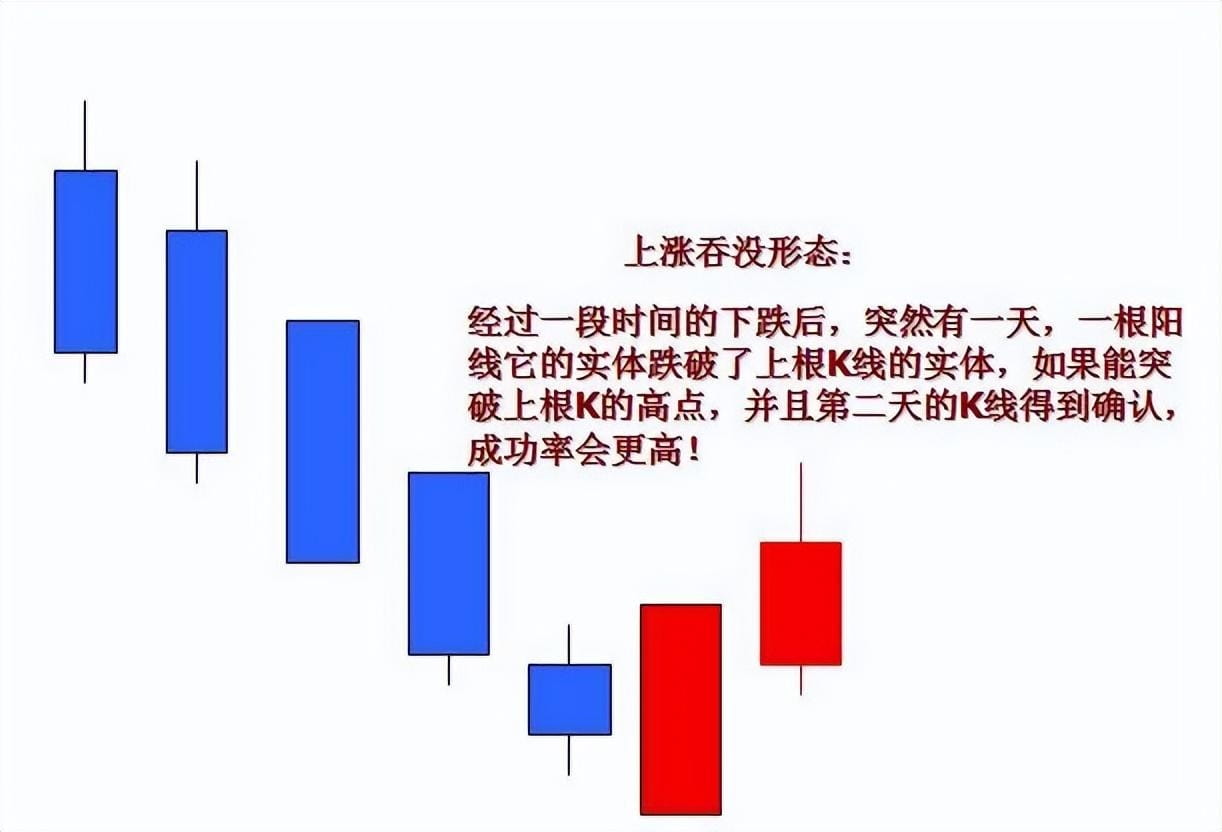
Bullish Engulfing Pattern
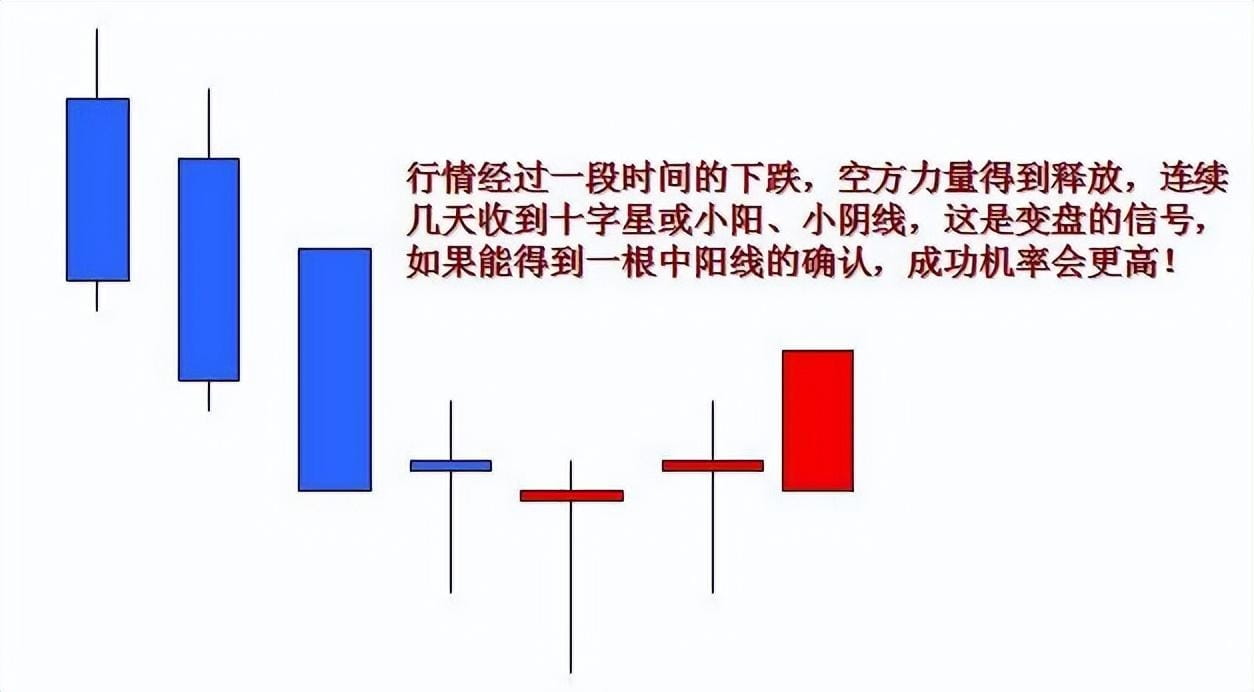
Reversal Signal
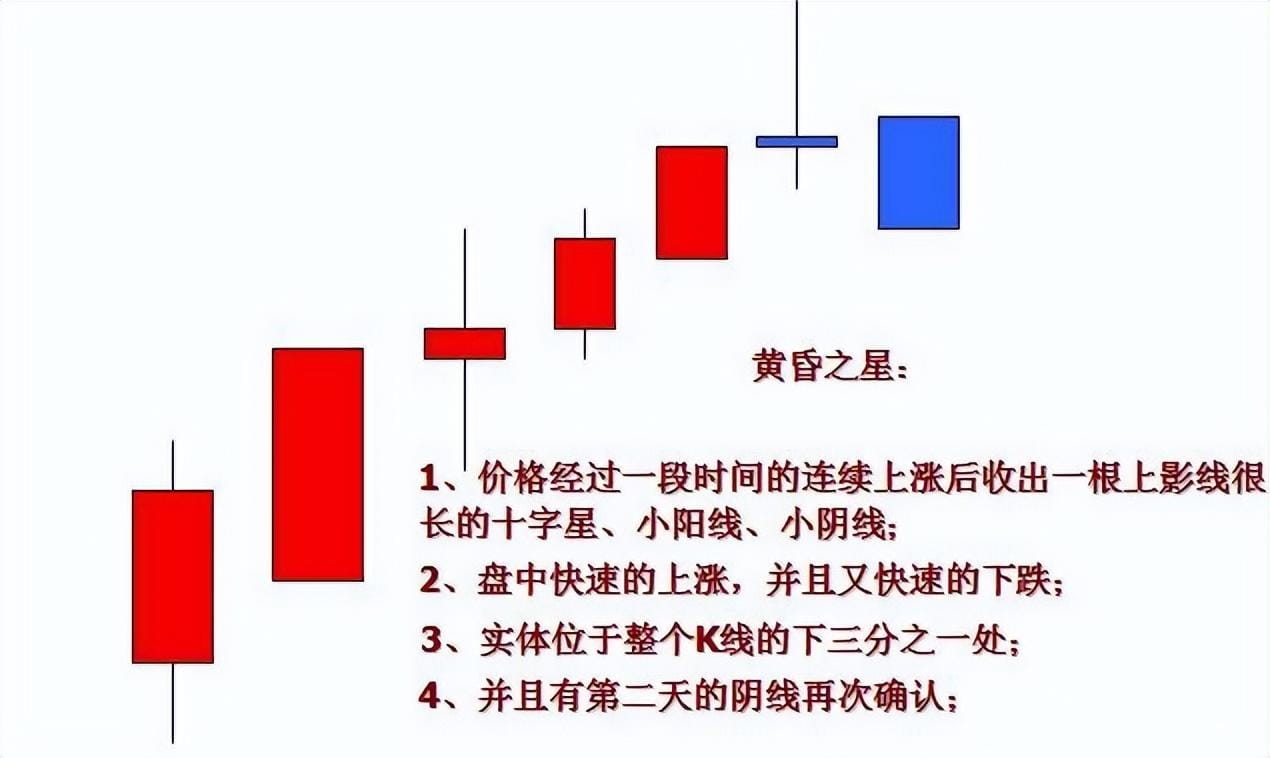
Evening Star
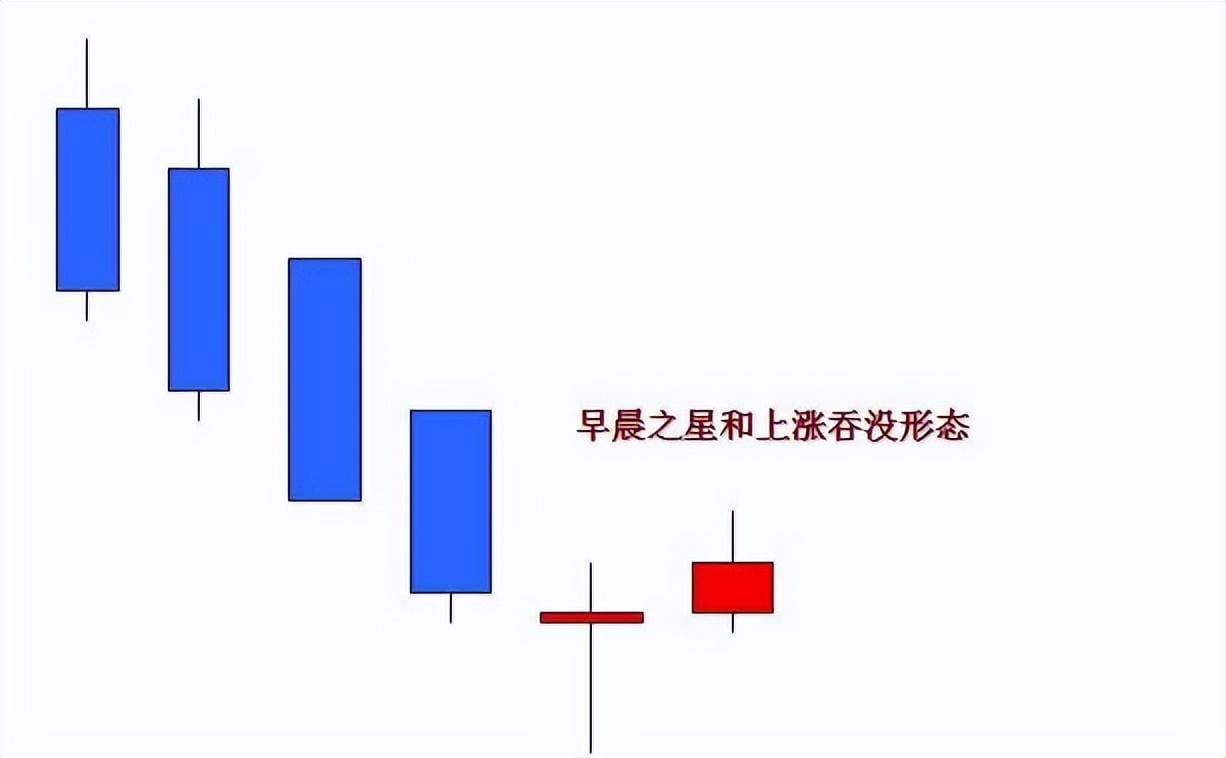
The above are several K-line combination patterns; let’s now get to know support and resistance levels:
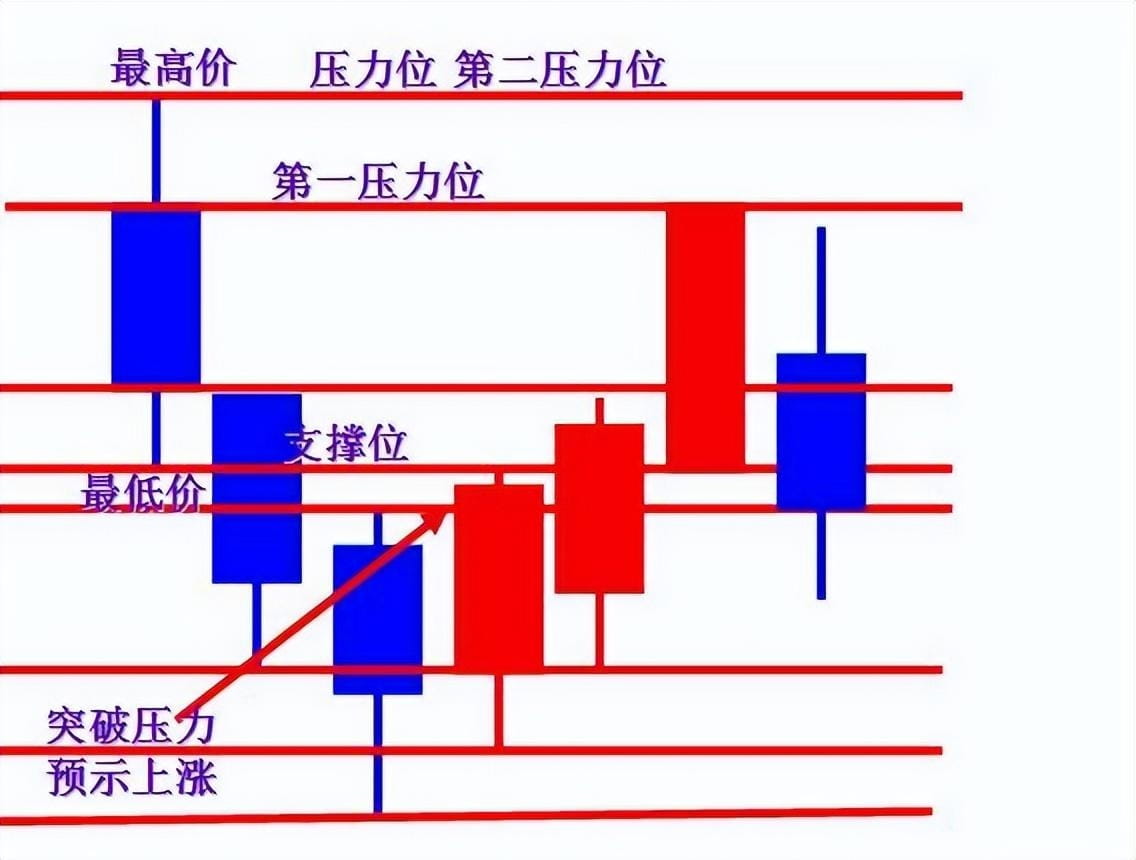
No amount of introduction can convey as much information as a single picture; let's have another introduction to help everyone better understand how to grasp trading points based on support and resistance levels.
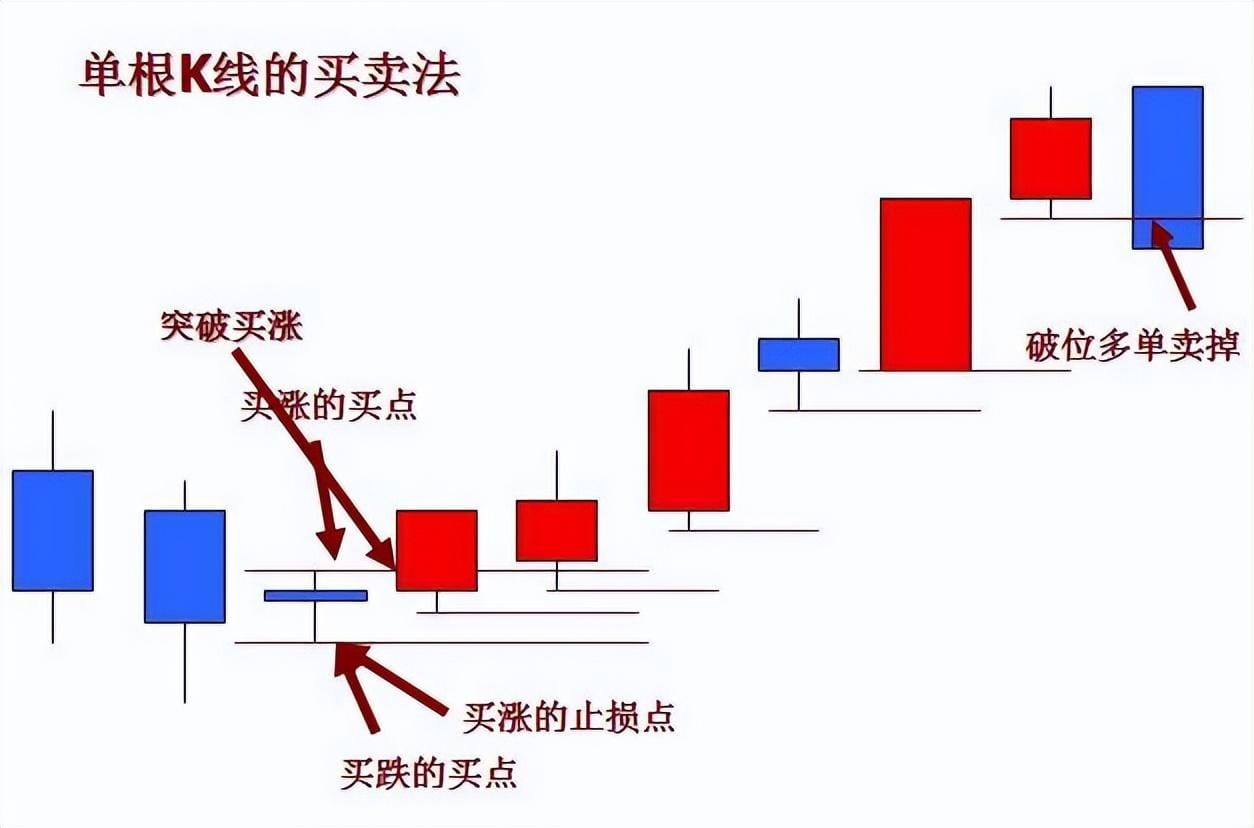
Traders often overlook the fact that they may need to adapt in order to profit in the long term. This situation primarily arises from the following two reasons:
(1) To execute profitable trades, you absolutely do not need any skills. Most traders often come to realize or admit after years of suffering and torment that creating long-term success requires more than just the occasional ability to select profitable trading opportunities.
(2) You do not need to go to great lengths to trade; you just need to pick up the phone, and you can trade without even getting out of bed in the morning. Even if traders are usually trading in an office, there is no need to enter the office to trade. Because we can interact with the market from our familiar personal environments, it seems we do not need to specifically change our mindset to trade.
In some ways, you may have already understood many basic facts related to the essence of trading (psychological characteristics), but knowing or understanding some principles, insights, or concepts does not necessarily equate to acceptance and belief.
When we truly accept something, it does not conflict with any other factors in our minds. When we believe something, we treat that belief as our natural function, operating based on that function without struggle or expending extra effort. If something conflicts with other factors in our minds, the higher the degree of conflict, the lower our acceptance of that matter.
Therefore, it is not so difficult to understand why only a few people can become successful traders; they simply have not invested enough effort to reconcile the contradictions and conflicts between what they have learned and their beliefs, nor do they realize that these contradictions and conflicts and their behavior are precisely the resistance preventing them from adopting various successful trading principles. To enter and utilize the kind of free-flowing mindset suitable for trading requires completely resolving these conflicts.#山寨季來了? $BTC
